Heparin 5000 5ml Injection
$60.00 – $150.00Price range: $60.00 through $150.00
| Pack Size | Price | Price / Unit | Quantity | |
|---|---|---|---|---|
| 3 Packs | $60.00 | $20.00/ unit | ||
| 5 Packs | $90.00 | $18.00/ unit | ||
| 10 Packs | $150.00 | $15.00/ unit |
Want to order in bulk / B2B price ? | Send Inquiry |


| SKU | 11528 |
| Manufacturer | Mits Healthcare Pvt Ltd |
| Categories | Anticoagulant |
| Delivery Time | 10 - 14 Working Days |
| Strength | 5000IU/5ml |
Introduction to Heparin 5000 5ml Injection
Heparin 5000 IU 5ml injection is an anticoagulant (blood thinner) used to prevent and treat blood clots in various medical conditions. It works by inhibiting specific clotting factors in the blood, thereby reducing the likelihood of clot formation. Heparin is commonly administered in hospitals, especially in patients who are undergoing surgery or are at high risk for deep vein thrombosis (DVT), Pulmonary Embolism (PE), or stroke.
Heparin 5000 IU 5ml injection is often used for short-term management in emergency settings, such as during acute myocardial infarction (heart attack) or unstable angina, to prevent the formation of new clots. It is also used during certain procedures like dialysis or angioplasty to reduce the risk of clotting during or after the procedure. Heparin 5000 5ml Injection is manufactured by MITS Healthcare.
Uses of Heparin 5000 5ml
Heparin 5000 5ml injection is a specific formulation of heparin, an anticoagulant medication. Here are some common uses for Heparin 5000 5ml injection:
- Prevention and Treatment of Deep Vein Thrombosis (DVT)
- Prevention and Treatment of Pulmonary Embolism (PE)
- Acute Myocardial Infarction (Heart Attack)
- Unstable Angina
- During and After Surgical Procedures
- During Dialysis
- Acute Stroke Prevention
How Does Heparin 5000 5 ml Injection Works?
Heparin 5000 IU 5ml injection works by inhibiting blood clotting. It primarily acts by enhancing the activity of antithrombin III, a protein that naturally inactivates several key clotting factors, such as thrombin and factor Xa. By inhibiting these clotting factors, Heparin prevents the formation of blood clots.
When administered, Heparin quickly enters the bloodstream and starts to prevent new clots from forming and existing clots from getting larger. This makes it effective in conditions where there is an increased risk of clotting, such as deep vein thrombosis (DVT), pulmonary embolism (PE), or unstable angina.
Side Effects of Heparin 5000 5ml
Common Side Effects
- Injection Site Reactions
- Hematoma Formation
- Thrombocytopenia
- Transient Elevations in Liver Enzymes
- Osteoporosis
- Hair Loss (Alopecia)
- Elevated Potassium Levels
Serious Side Effects
- Heparin-Induced Thrombocytopenia (HIT)
- Allergic Reactions
- Fractures
- Heparin-Induced Skin Necrosis
- Spinal or Epidural Hematoma
- Hyperkalemia
Dosage of Heparin 5000 5ml
The dosage of Heparin 5000 5ml Injection depends on various factors, including the specific indication for use, the patient’s weight, age, renal function, and other medical conditions. It’s crucial to follow the prescribing healthcare provider’s instructions carefully.
Other Dosage of Heparin
How To Manage Side Effects?
- Regularly monitor for signs of bleeding.
- If you notice any signs of thrombocytopenia (such as unexplained bruising, bleeding, or fatigue), contact your healthcare provider immediately.
- Monitor blood pressure regularly, especially in the initial stages of treatment.
- If you notice any signs of an allergic reaction, such as swelling of the face, lips, or tongue, seek immediate medical attention.
- Regular blood tests should be done to assess kidney function.
Warning & Precautions
Heparin 5000 5ml Injection is a potent anticoagulant medication that requires careful administration and monitoring due to its potential side effects and interactions. Here are some important warnings and precautions associated with its use:
1. Bleeding Risk:
- Heparin increases the risk of bleeding, which can be minor or severe and potentially life-threatening. Caution is advised in patients with a history of bleeding disorders, recent surgeries, severe hypertension, gastrointestinal ulcers, or other conditions that may increase bleeding risk. Monitor patients closely for signs of bleeding, such as bruising, petechiae, hematomas, gastrointestinal bleeding, or intracranial hemorrhage.
2. Heparin-Induced Thrombocytopenia (HIT):
- Heparin can cause immune-mediated heparin-induced thrombocytopenia (HIT), characterized by a decrease in platelet count and an increased risk of thrombosis. Monitor platelet counts regularly, especially in patients receiving heparin for more than a few days. Discontinue heparin immediately if HIT is suspected and consider alternative anticoagulation therapy.
3. Hypersensitivity Reactions:
- Heparin can cause allergic or hypersensitivity reactions, ranging from mild skin rashes to severe anaphylaxis. Monitor patients for signs of allergic reactions, such as skin rash, itching, hives, difficulty breathing, or swelling of the face or throat. Discontinue heparin and administer appropriate treatment if a hypersensitivity reaction occurs.
4. Spinal or Epidural Hematoma:
- Patients receiving neuraxial anesthesia (e.g., spinal or epidural anesthesia) or undergoing spinal puncture procedures while on heparin therapy are at increased risk of developing spinal or epidural hematoma, which can lead to paralysis. Use caution when administering heparin to patients receiving neuraxial anesthesia or undergoing spinal procedures, and closely monitor for signs and symptoms of neurologic impairment.
5. Renal Impairment:
- Heparin is primarily eliminated by the kidneys, and its clearance may be reduced in patients with renal impairment. Adjust the dosage of heparin based on renal function, and monitor anti-factor Xa levels or activated partial thromboplastin time (aPTT) closely to avoid excessive anticoagulation.
6. Heparin Resistance:
- Some patients may develop resistance to heparin therapy, leading to inadequate anticoagulation. Monitor anti-factor Xa levels or aPTT regularly to ensure therapeutic anticoagulation and consider alternative anticoagulants if necessary.
7. Drug Interactions:
- Heparin may interact with other medications, such as antiplatelet agents, nonsteroidal anti-inflammatory drugs (NSAIDs), thrombolytics, or other anticoagulants, increasing the risk of bleeding. Assess for potential drug interactions and adjust the dosage or monitor patients closely when coadministering heparin with other medications.
Safety Advice
Safety advice for Heparin 5000 5ml Injection involves several key considerations to ensure the safe and effective use of the medication. Here are some important safety recommendations:
- Administration by Healthcare Professionals
- Dosage and Administration Instructions
- Monitoring
- Patient Monitoring
- Storage and Handling
- Patient Identification and Documentation
FAQs – Frequently Asked Questions
1. Can Heparin 5000 5ml Injection be self-administered?
In some cases, patients may be trained to self-administer Heparin 5000 5ml Injection subcutaneously at home, particularly for long-term anticoagulant therapy. However, this should only be done under the guidance and supervision of a healthcare professional.
2. How should Heparin 5000 5ml Injection be stored?
Heparin 5000 5ml Injection should be stored according to the manufacturer’s instructions, typically at room temperature away from light and moisture. Check the expiration date before use and discard any expired medication.
3. Can I take other medications while using Heparin 5000 5ml Injection?
Inform your healthcare provider about all medications, supplements, and herbal products you are taking, as they may interact with Heparin 5000 5ml Injection. Avoid starting or stopping any medications without consulting your healthcare provider.
4. What should I do if I miss a dose of Heparin 5000 5ml Injection?
If you miss a dose of Heparin 5000 5ml Injection, contact your healthcare provider for guidance. Do not double the dose to make up for the missed dose unless instructed to do so.
| Pack Size | 10 Packs, 3 Packs, 5 Packs |
|---|---|
| Price/Unit | $15/unit, $18/unit, $20/unit |
Be the first to review “Heparin 5000 5ml Injection” Cancel reply
Related Products
No related Products Found

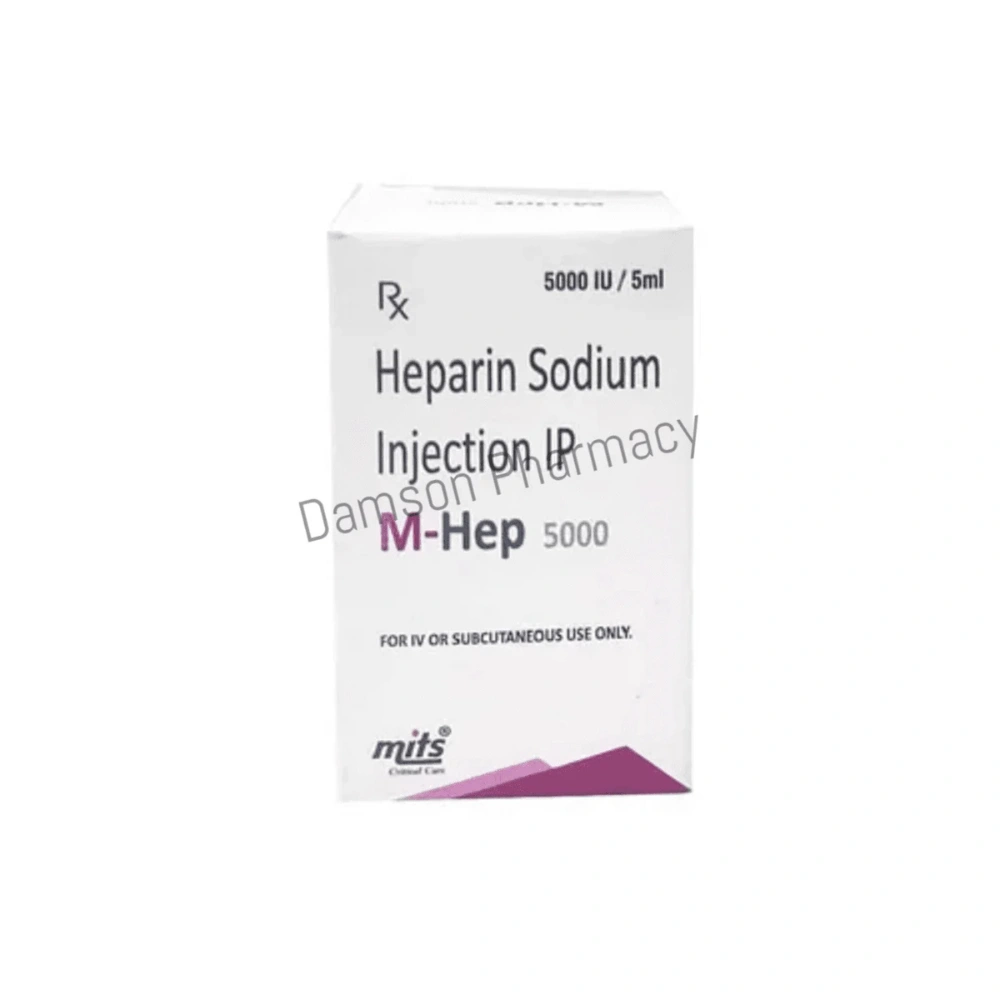
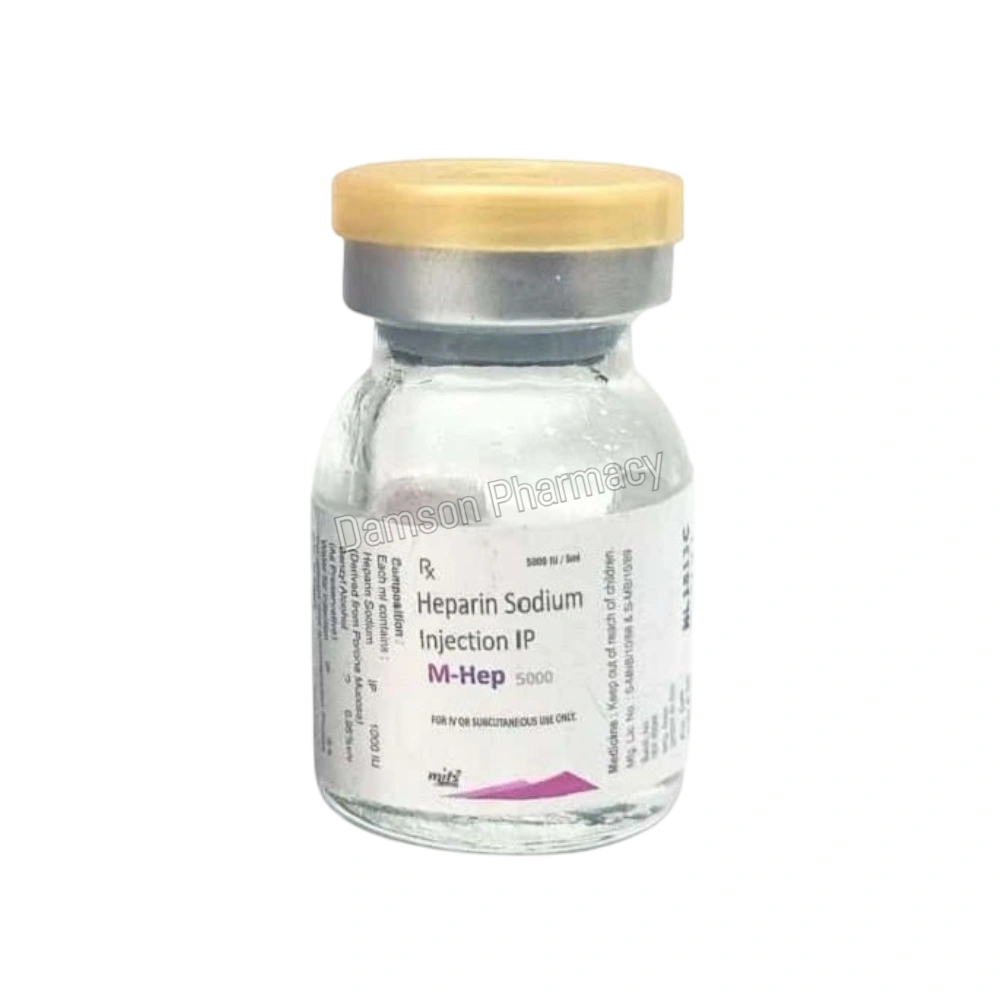
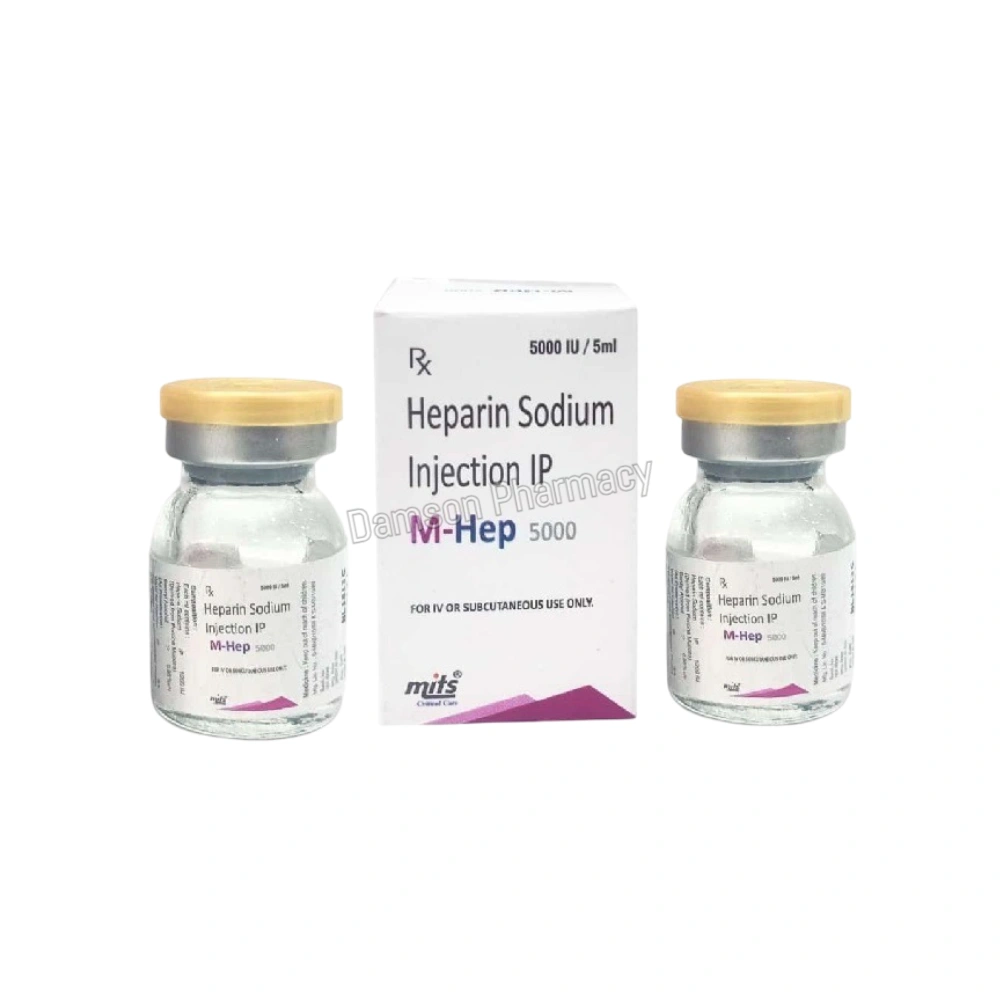
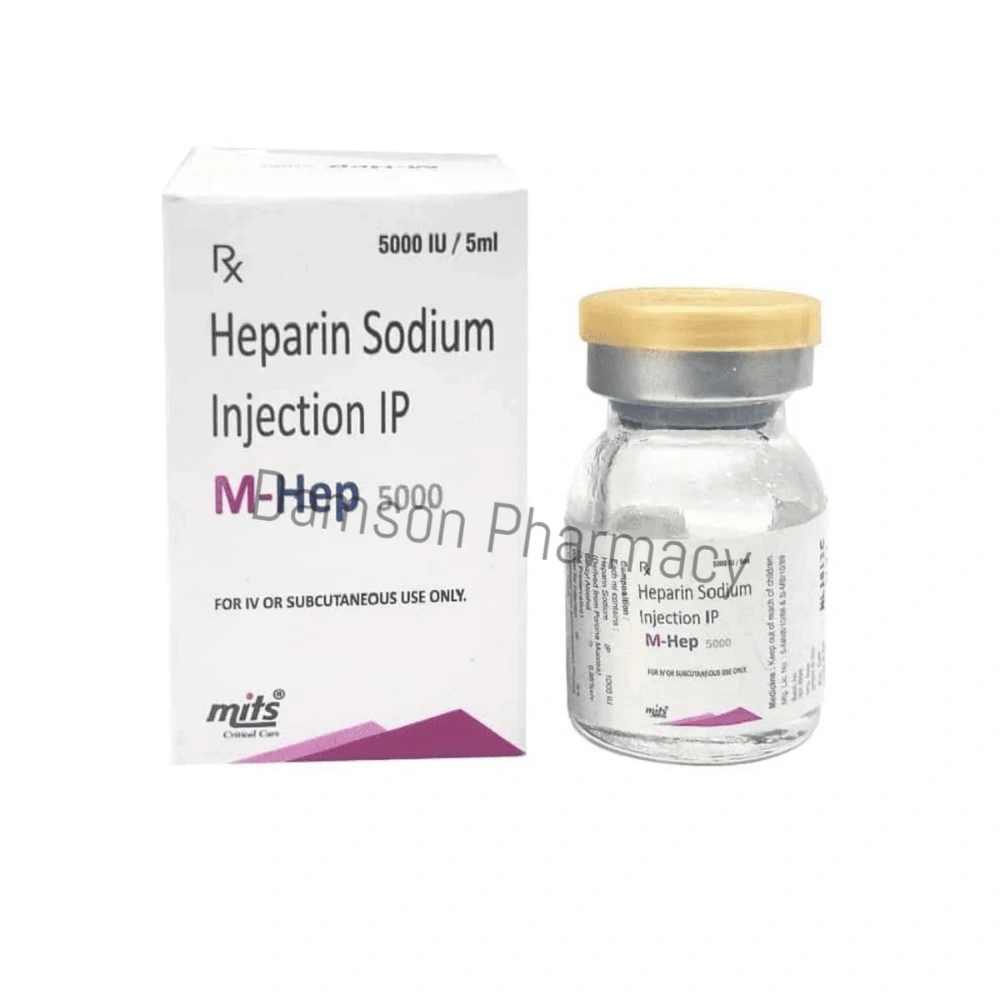
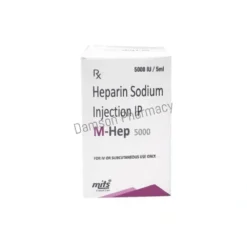


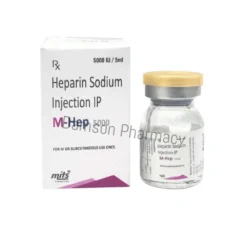
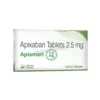

Reviews
There are no reviews yet.